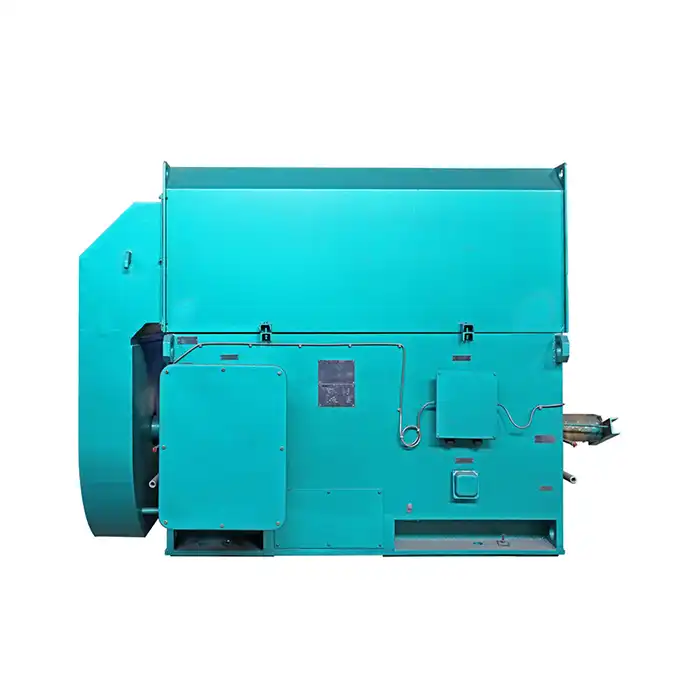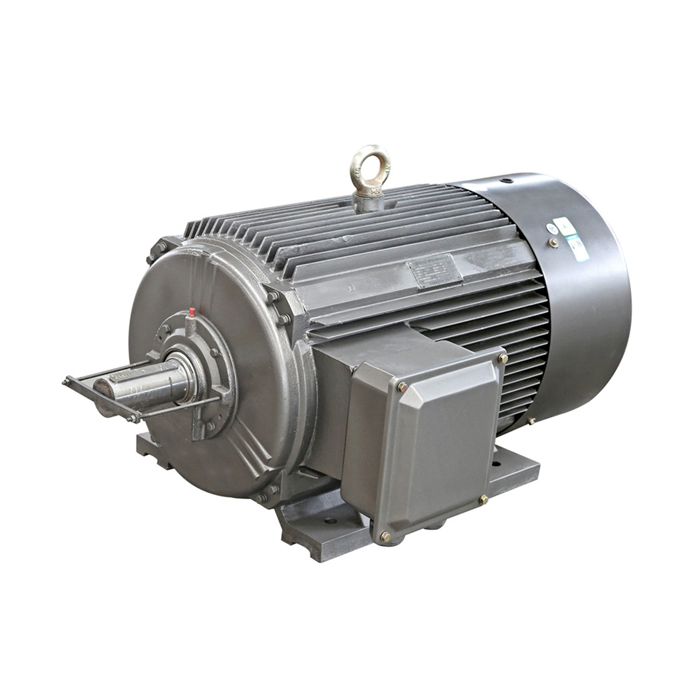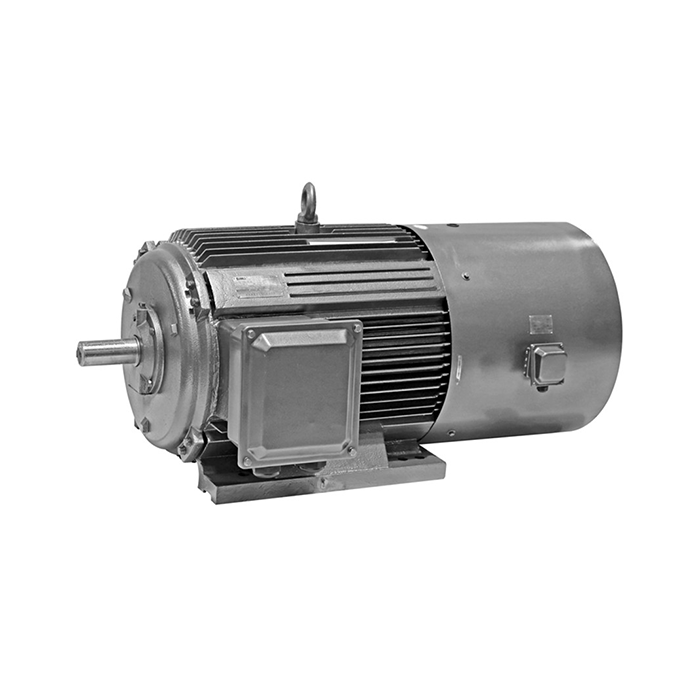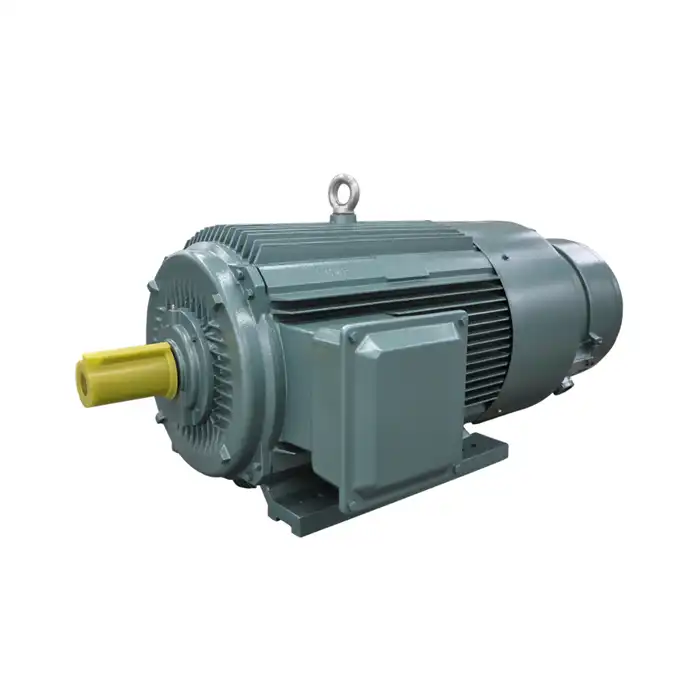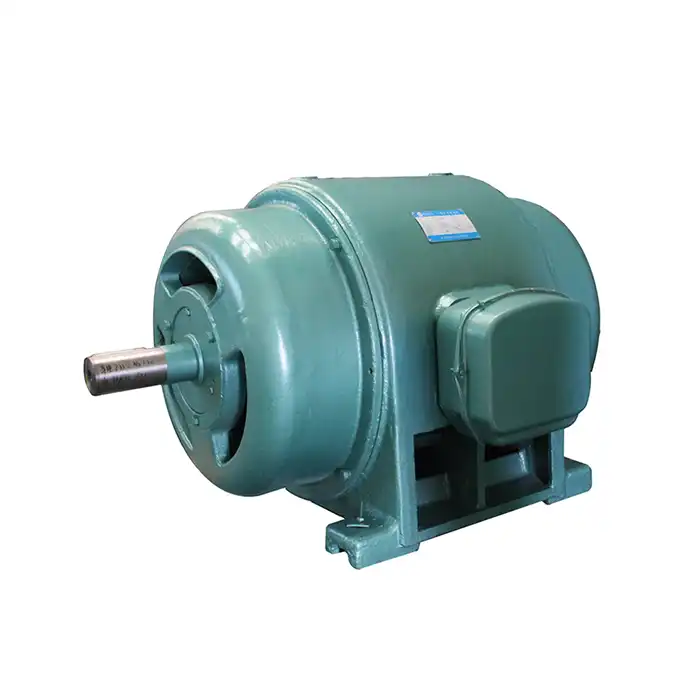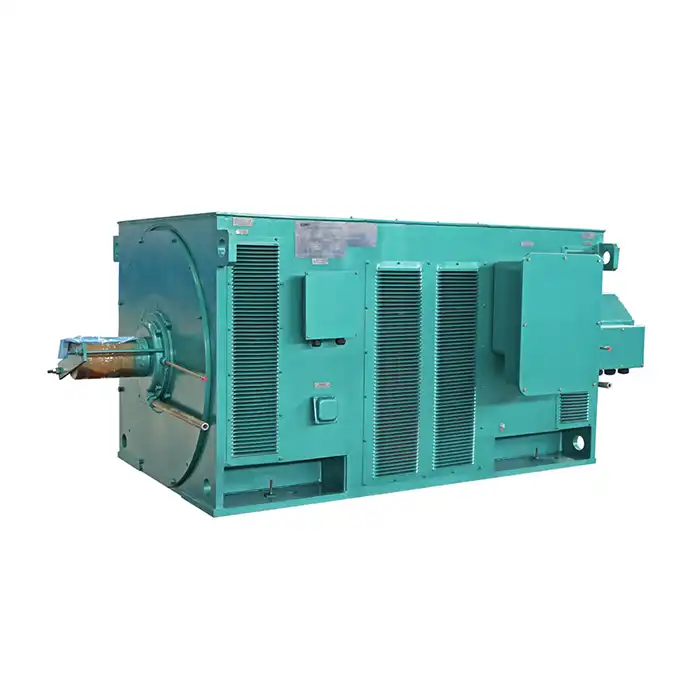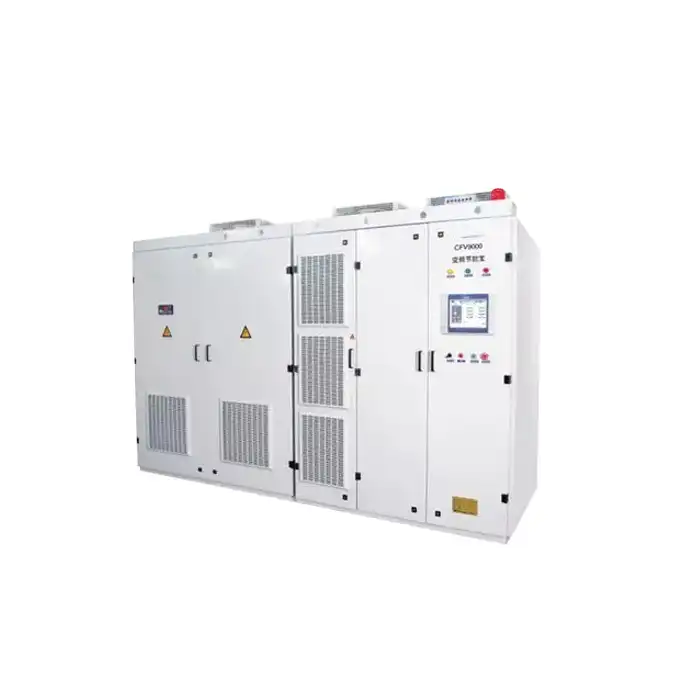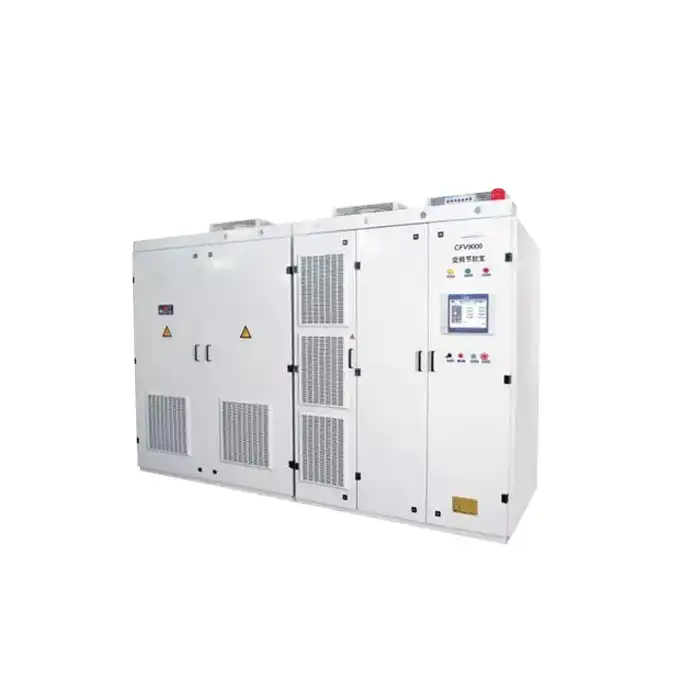What control methods are used with inverter duty induction motors?
In many industrial settings, inverter duty induction motors are necessary because they allow precise speed control and use little energy. Understanding the different ways these motors can be controlled is important for getting the most out of them and making them last longer. We will talk about the most common control methods, more advanced methods for high-performance uses, and new sensorless control technologies in this piece.
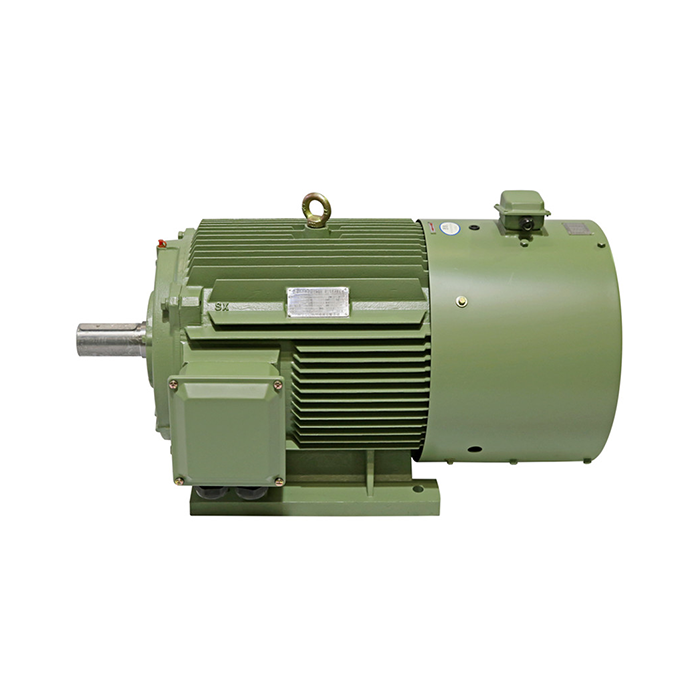
Series:YVFE3
Frequency conversion range:30hz~50hz,5hz~70hz,5hz~100hz
Power range:0.75-1000kW
Protection level:IP55
Application:are suitable for driving various mechanical equipment that require continuous and frequent forward and reverse rotation, such as steel rolling, lifting, transportation, machine tools, printing and dyeing, papermaking, chemicals, textiles, pharmaceuticals, etc., and can be used with various domestic and foreign variable frequency power supplies.
Advantage:high efficiency, wide speed range, high precision, stable operation, and easy operation and maintenance.
Certificate:installation dimensions comply with International Electrotechnical Commission (IEC) standards.
Others: SKF, NSK, FAG bearings can be replaced according to customer requirements.
Common control methods for inverter duty induction motors
Volts/Hertz (V/Hz) Control
V/Hz control is one of the most common methods used for inverter duty induction motors. It works by maintaining a constant ratio of voltage to frequency, ensuring that the motor's magnetic flux stays stable. This method is relatively simple to implement and cost-effective, which makes it a popular choice for general-purpose applications. V/Hz control is well-suited for systems that do not require precise speed control but need reliable operation in a wide range of conditions.
Scalar Control
Scalar control is an extension of V/Hz control, designed to provide improved performance at lower speeds. Unlike V/Hz control, scalar control allows for independent adjustments of both voltage and frequency. This added flexibility enhances torque control across a broader range of speeds, making it particularly beneficial in applications like pumps and fans, where precise speed regulation is necessary for optimal performance and energy efficiency.
Field-Oriented Control (FOC)
Field-Oriented Control (FOC), also known as vector control, is a more sophisticated technique that delivers superior dynamic performance. FOC decouples the motor's flux and torque components, enabling independent control of each. This method results in faster response times and more accurate speed regulation, making it ideal for applications that demand high precision, such as robotics, CNC machines, or any system requiring smooth, consistent performance at varying speeds. FOC is often preferred for applications that require both high torque and precise control.
Control Methods Suitable for High-Performance Applications
Direct Torque Control (DTC)
Direct Torque Control is an advanced control method that provides extremely fast torque response and excellent dynamic performance for inverter duty induction motors. Unlike traditional vector control, DTC directly regulates both the torque and flux of the motor without requiring complex coordinate transformations or pulse-width modulation algorithms. This allows for highly responsive operation, making it ideal for high-performance applications such as electric vehicles, industrial machinery, and robotics, where rapid torque adjustments and precise control are critical for efficiency and safety.
Model Predictive Control (MPC)
Model Predictive Control leverages a mathematical model of the motor to anticipate its future behavior and optimize control actions accordingly. By continuously predicting system responses, MPC achieves precise speed regulation, torque control, and improved energy efficiency. This method is particularly valuable in complex systems with multiple constraints or performance objectives, such as multi-motor drives or automation systems, where traditional control methods may struggle to maintain optimal performance under varying conditions.
Sliding Mode Control (SMC)
Sliding Mode Control is a robust technique designed to maintain reliable performance even in the presence of system uncertainties or external disturbances. It employs a nonlinear switching control strategy to force the system state to move along a predefined sliding surface, ensuring stability and accuracy. SMC is especially useful in environments with fluctuating loads, harsh conditions, or high-performance industrial applications, where maintaining precise motor operation is essential despite unpredictable changes in operating conditions.
Sensorless Control Techniques: The Future of Motor Drives?
Model Reference Adaptive System (MRAS)
The Model Reference Adaptive System (MRAS) is a sensorless control technique that estimates rotor speed by comparing the output of two models: a reference model and an adaptive model. The adaptive model adjusts based on real-time measurements, allowing it to accurately predict the motor's behavior without relying on physical speed sensors. This method reduces the overall system cost and complexity while providing reliable performance over a wide range of operating speeds. MRAS is particularly beneficial in applications where space constraints or budget limitations make the inclusion of physical sensors impractical.
Extended Kalman Filter (EKF)
The Extended Kalman Filter (EKF) is a powerful estimation technique used in sensorless control for inverter duty induction motors. EKF employs a recursive algorithm to estimate the motor's state variables, such as speed and flux, based on available voltage and current measurements. By continuously updating estimates, the EKF provides highly accurate state predictions, even at low speeds or under fluctuating load conditions. This makes it ideal for applications requiring precise motor control and smooth operation across varying conditions, such as in robotics, HVAC systems, and electric vehicles.
Artificial Intelligence-Based Control
Artificial Intelligence (AI)-based control techniques, including neural networks and fuzzy logic, are gaining traction in sensorless control applications. These methods allow for adaptive control systems that can learn and adjust to changing motor parameters and operating environments. By continuously improving their performance based on real-time data, AI-based systems can outperform traditional sensorless methods in terms of reliability, energy efficiency, and fault tolerance. As AI technology advances, these systems are expected to provide even more precise control and greater adaptability, making them a promising future direction for motor drives in complex, dynamic environments.
Conclusion
The choice of control method for inverter duty induction motors depends on the specific requirements of the application, including performance needs, cost constraints, and environmental factors. While V/Hz and scalar control remain popular for general-purpose applications, advanced techniques like FOC, DTC, and MPC offer superior performance for demanding applications. Sensorless control methods are gaining traction due to their cost-effectiveness and reliability, with AI-based techniques showing promise for future developments.
As technology continues to advance, we can expect to see further improvements in motor control strategies, leading to even more efficient and capable inverter duty induction motors across a wide range of industries.
Optimize Your Motor Control with XCMOTOR's Expertise
We at XCMOTOR know how hard it is to handle an inverter duty induction motor and can make solutions that fit your needs. Our team of experts can help you choose and use the best control method for your needs, ensuring top performance, low energy use, and dependability. Because we have a lot of knowledge with power equipment solutions, we can offer you high-quality motors and drives that provide stable power and use little energy. Don't let motor control challenges hold you back – contact us today at xcmotors@163.com to discover how we can enhance your industrial processes and drive your success forward. Trust XCMOTOR, your reliable inverter duty induction motor manufacturer, for all your motor control needs.
References
1. Johnson, M. P., & Smith, R. T. (2019). Advanced Control Techniques for Inverter Duty Induction Motors. IEEE Transactions on Industrial Electronics, 66(5), 3721-3734.
2. Zhang, L., & Wang, Y. (2020). Sensorless Control Methods for Inverter-Fed Induction Motors: A Comprehensive Review. IET Electric Power Applications, 14(7), 1215-1229.
3. Rodriguez, J., & Cortes, P. (2018). Predictive Control of Power Converters and Electrical Drives (2nd ed.). Wiley-IEEE Press.
4. Kumar, A., & Verma, S. K. (2021). Artificial Intelligence-Based Control Strategies for Inverter Duty Induction Motors: Current Status and Future Prospects. Electric Power Systems Research, 190, 106692.
5. Bose, B. K. (2017). Modern Power Electronics and AC Drives (2nd ed.). Prentice Hall.
6. Holtz, J. (2019). Sensorless Control of Induction Motors—20 Years of Development. IEEJ Transactions on Industry Applications, 139(1), 1-11.



